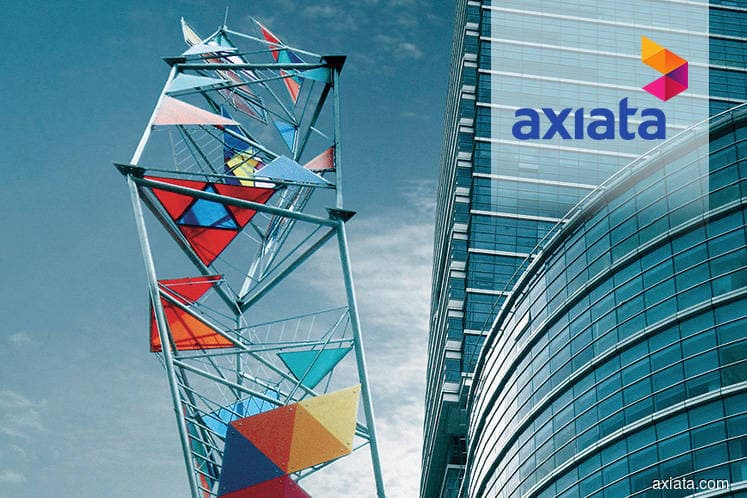
This article first appeared in The Edge Financial Daily on February 11, 2019
Axiata Group Bhd
(Feb 8, RM3.73)
Maintain outperform with a lower target price (TP) of RM4.50: Axiata Group Bhd served with a RM2.2 billion tax bill in the Ncell buyout, caught us by surprise. This may lead to negative knee-jerk reactions in the short term. Besides, the group may also potentially provide for some non-core impairments related to its legacy equipment. We made no changes to our financial years 2018 and 2019 estimate (FY18-FY19E) earnings forecasts. We reiterate our “outperform” call but with a lower sum of parts (SoP)-derived TP of RM4.50, implied -0.5 times below its five-year enterprise value to earnings before interest, taxes, depreciation and amortisation (EV/Ebitda) mean.
On the Ncell buyout deal, the Supreme Court of Nepal ordered Ncell and its major shareholder Axiata Group, which owned 80% of the former, to pay an outstanding capital gains tax of 61 billion Nepalese rupees (about RM2.16 billion) excluding late fees and fines, according to a Feb 6 report by The Himalayan Times. Although Axiata had paid a total tax of 23.6 billion rupees in mid-2017, the Nepal authorities may require Ncell and Axiata to deposit the entire 66 billion rupees, including the late fees and fines, and deduct the paid amount after the two companies file a formal application demanding a reduction in the tax bill, according to the local authorities.
In a record deal struck in April 2016, Axiata bought Reynolds Holdings Ltd, majority owned by TeliaSonera, for US$1.365 billion. The tax debate issue came to the fore after the tax authority failed to notify Axiata about the tax liability, despite Axiata seeking to find out whether the deal would attract a tax in Nepal as the taxman only initiated taxing for the transaction after TeliaSonera exited Nepal.
As per existing laws, the Nepalese authorities should get 25% of the profit from the TeliaSonera-Axiata deal. Of that amount, 15% of the applicable tax should be left at the company that was sold, while the remaining 10% of the amount should be paid by the seller. The Supreme Court’s latest decision ended a long-drawn debate over whether the buyer should pay the tax when the seller does not settle its tax liabilities.
The latest tax woes caught us by surprise as Axiata, in June 2017, highlighted the tax dispute was settled after paying an advance deposit of 13.6 billion rupees, following the first deposit of 9.97 billion rupees in May 2015, to the Nepalese taxman to resolve a capital gains tax dispute. If Axiata complies with the Supreme Court’s order and deposit the entire 66 billion rupees (RM2.35 billion), it will raise our estimated FY19 gross debt-to-Ebitda and net debt-to-Ebitda ratios to 2.4 times and 1.7 times respectively, versus 2.1 times and 1.5 times previously.
We believe our reported profit after tax and minority interest (Patmi) for FY18 may be overstated given Axiata is expected to provide for impairments in the upcoming fourth quarter of 2018 (4QFY18) results, set to be released on Feb 22. The impairments are believed to be related to the modernisation and technology changes in certain markets, leading to some legacy equipment made redundant. As such, we believe our full-year core Patmi estimate of RM912 million — versus RM668 million for the first nine months of 2018 — remains intact.
While we made no changes to our FY18 and FY19E earnings forecasts, pending the release of 4QFY18 results, we have lowered our Axiata’s SoP-derived TP to RM4.50 versus RM4.60 previously, after lowering our Ncell’s targeted earnings multiplier to five times versus six times previously, to account for higher regulation risks ahead in Nepal.
All in, we are keeping our “outperform” call in view of its relatively decent valuation — forward EV/Ebitda of 7.2 times versus peers of 12 to 13 times — coupled with a stronger Celcom and earnings recovery at XL. Bargain-hunting opportunity could potentially arise on any share price weakness due to the recent hiccup. We advocate investors to start accumulating the shares at about the RM3.70 level. Key downside risks include a keener competition, tax and regulatory challenges, and currency volatility. Upside risks are a stronger-than-expected recovery at Celcom and XL, and edotco’s organic and inorganic growth. — Kenanga Research, Feb 8